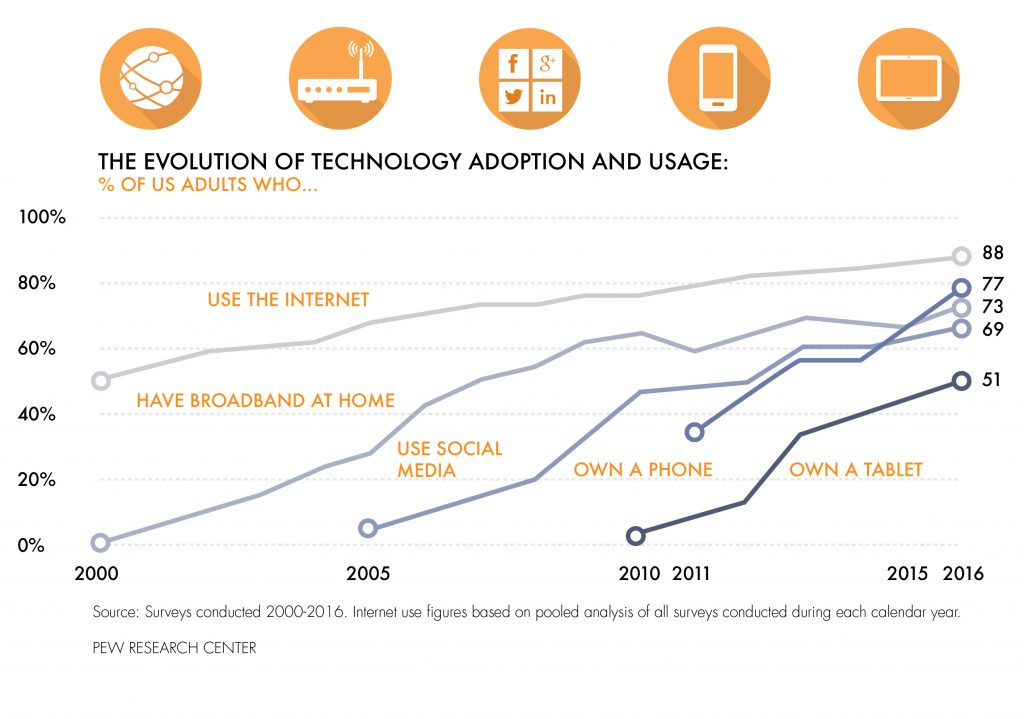Done right, employee recognition has a significant impact on business results. But not all attempts succeed. In fact, some fail miserably. The question is, why?
When it comes to their employee recognition initiatives, bad companies commit many transgressions, but the biggest stems from a lack of automation. Less than half of all companies use electronic media or internet/intranet for communications. Only 39% use it for administration.
Frankly, there is no reason for that. What “knowledge worker” doesn’t have access to a web-connected platform on their laptop or phone? Ditto for modern-day “blue collar” staff who work with (or around) tablets and kiosks all day long. Those who are not connected on the job have their own devices. Record shares of Americans now own smartphones and have home broadband.
Disconnected, manual programs create big problems. They can be inconsistent in their utilization and vague in their direction. Let’s explore those faults.
They cultivate inconsistency
If you want recognition to work well it must be perceived as a reliable reward for good performance.
Digest that for a second and then think about this - many employees feel that their good work goes unrecognized. They feel they deliver beyond expectations often, but get recognized only occasionally.
How wide is the disconnect? When asked what their managers could do to improve their performance, more than half of all workers indicated they could say “thank you” once in a while. 69% of employees said they would work harder if they felt their efforts were appreciated more. Automated systems, specifically SaaS-driven social recognition systems improve the cadence of recognition as well as the sources behind it. Recognition travels through the organization organically.
“More recognition, more often” should be the mantra for businesses everywhere. With an automated, social recognition system in place, employees are recognized more, more by their managers and more by their peers. With that cross current of inputs happening on a frequent basis, employees experience an even (and more consistent) flow of appreciation. Now the frequency of recognition improves dramatically. If you want to create a program that’s more constant, more consistent, more aligned, and more active, switch to an automated social recognition system.
They are vague
The only worse transgression than being inconsistent is being vague. Programs that are muddled in their meaning have a zero chance of registering with their targeted audience. It’s not enough to simply launch a program. You have to make sure each and every employee (including managers) understands both its purpose and their roles in it. By that I mean knowing not simply how it works (although that’s important) but having a firm grasp of what’s expected of each worker.
Non-automated companies drop the ball there. They think of communications as “roll out” exercises. Yes, they make an initial splash, but on an employee-by-employee level they create more questions than answers. They don’t take the time to capture the attention and commitment of all workers. They don’t explain “what’s in it for me” and/or “what’s expected of me” across the entire employee constituency. As a result, many are left with a vague idea as to what the company’s aims are and where they fit in.
Breaking down expectations across the entire employee universe sounds like a daunting task. Make no mistake about it, without the benefits of automation it will be. But, here’s the good news. With a system in place you can simply take a data-driven approach. That allows you to communicate on a mass level but do so with specific intent. You can systematically connect desired outcomes to each employee’s normal day-to-day duties.




